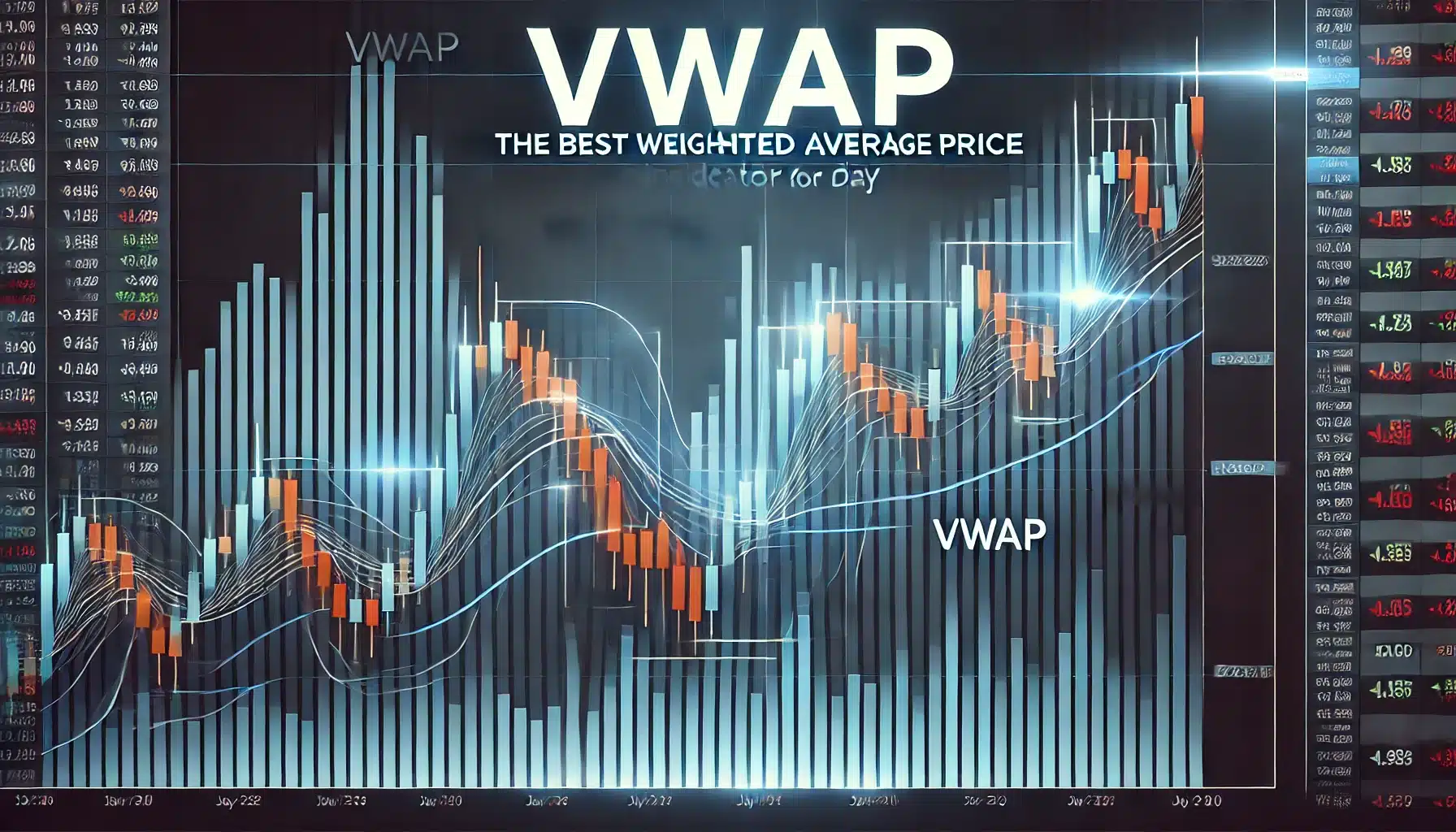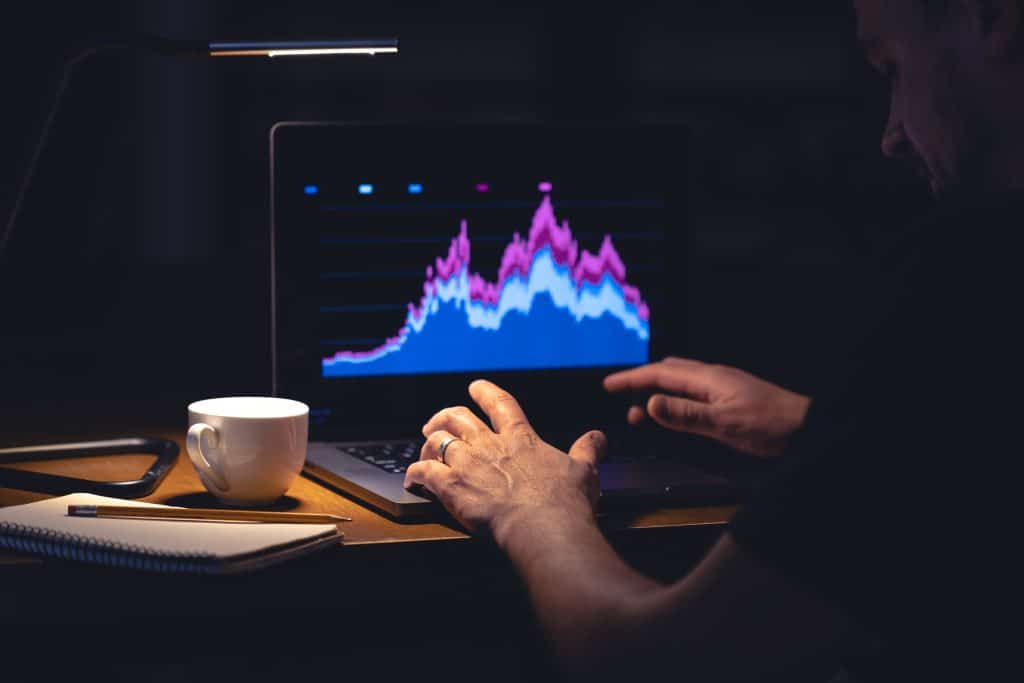VWAP: The Best Indicator for Day Trading
VWAP: The Ultimate Guide for Day Trading Success

In the fast-paced world of day trading, having the right tools and strategies can mean the difference between profit and loss. Among the myriad of indicators available to traders, one stands out for its reliability, versatility, and widespread use: the Volume Weighted Average Price, or VWAP. This comprehensive guide will delve deep into the world of VWAP, exploring its significance in day trading and how you can leverage it to enhance your trading performance.
Understanding Day Trading
Before we dive into the specifics of VWAP, it’s crucial to understand the context in which it’s most commonly used: day trading.
What is Day Trading?
Day trading is a style of trading where financial instruments, such as stocks, currencies, or commodities, are bought and sold within the same trading day. All positions are closed before the market closes, ensuring that no position is held overnight.
The Challenges of Day Trading
Day trading is often considered one of the most challenging forms of trading due to several factors:
- High Intensity: Traders must make quick decisions based on real-time market data.
- Psychological Pressure: The fast-paced environment can lead to emotional decision-making.
- Competition: Day traders compete against institutional investors and algorithms.
- Market Volatility: Intraday price movements can be unpredictable and rapid.
- Transaction Costs: Frequent trading can lead to high commission fees.
Given these challenges, day traders need reliable tools and indicators to guide their decision-making process. This is where VWAP comes into play.
What is VWAP?
The Volume Weighted Average Price (VWAP) is a trading benchmark calculated using both volume and price. It represents the average price a security has traded at throughout the day, based on both volume and price.
VWAP Calculation
The formula for VWAP is:
VWAP = Cumulative (Price * Volume) / Cumulative Volume
This calculation is typically done over a single trading day, resetting at the start of each new trading day.
Why VWAP Matters
VWAP is crucial for several reasons:
- Price Comparison: It provides a benchmark to compare the current trading price against.
- Volume Consideration: Unlike simple moving averages, VWAP factors in trading volume.
- Institutional Use: Many large institutions use VWAP to determine optimal entry and exit points.
- Market Sentiment: VWAP can indicate overall market sentiment towards a security.
VWAP vs Other Popular Indicators
While VWAP is highly regarded, it’s important to understand how it compares to other popular trading indicators:
1. VWAP vs. Simple Moving Average (SMA)
- VWAP: Considers both price and volume; resets daily.
- SMA: Only considers price; continues across multiple trading days.
2. VWAP vs. Exponential Moving Average (EMA)
- VWAP: Equally weights all data points.
- EMA: Gives more weight to recent price data.
3. VWAP vs. Relative Strength Index (RSI)
- VWAP: Focuses on average price and volume.
- RSI: Measures the speed and change of price movements.
4. VWAP vs. Bollinger Bands
- VWAP: Provides a single reference line.
- Bollinger Bands: Provide a range of price volatility.
While each indicator has its strengths, VWAP’s consideration of both price and volume makes it particularly valuable for day traders.
How to Use VWAP in Day Trading
VWAP can be used in various ways to inform trading decisions:
1. Determining Trend Direction
- Price above VWAP: Bullish trend
- Price below VWAP: Bearish trend
2. Identifying Support and Resistance
VWAP often acts as a dynamic support/resistance level throughout the trading day.
3. Timing Entries and Exits
- Buy when price crosses above VWAP (with confirmation)
- Sell when price crosses below VWAP (with confirmation)
4. Gauging Buying/Selling Pressure
- Strong buying pressure: Price consistently above VWAP
- Strong selling pressure: Price consistently below VWAP
5. Assessing Trade Performance
Traders can compare their average execution price to VWAP to evaluate their performance.
Advanced VWAP Strategies
For experienced traders, here are some advanced strategies incorporating VWAP:
1. VWAP Bands
Create upper and lower bands around VWAP (e.g., VWAP ± 2 standard deviations) to identify potential reversal points.
2. Multiple Time Frame Analysis
Compare VWAP across different time frames (e.g., 5-minute, 15-minute, 1-hour) to confirm trends and identify potential turning points.
3. VWAP Convergence/Divergence
Look for instances where VWAP is converging or diverging with price, which can signal potential trend changes.
4. Combining VWAP with Volume Profile
Use Volume Profile in conjunction with VWAP to identify key price levels with high trading activity.
5. Anchored VWAP
Instead of resetting VWAP daily, anchor it to significant price points (e.g., recent highs/lows, earnings releases) for a different perspective.
Common Mistakes to Avoid When Using VWAP
While VWAP is a powerful tool, it’s not infallible. Here are some common mistakes to avoid:
- Overreliance: Don’t use VWAP as your sole indicator. Combine it with other technical and fundamental analysis.
- Ignoring Context: VWAP is most effective in trending markets. Be cautious in choppy or sideways markets.
- Neglecting Time of Day: VWAP is more reliable during the middle of the trading day. Be cautious near market open and close.
- Forgetting About Volume: Always consider the volume when interpreting VWAP signals.
- Disregarding Broader Market Conditions: VWAP for individual stocks can be influenced by overall market trends.
Risk Management with VWAP
While VWAP can improve your trading decisions, proper risk management is crucial:
- Set Stop Losses: Use VWAP as a reference point for setting stop-loss orders.
- Position Sizing: Don’t risk more than a small percentage of your capital on any single trade.
- Use Confirmation: Wait for additional confirmation (e.g., candlestick patterns, other indicators) before entering trades based on VWAP.
- Monitor Multiple Time Frames: Ensure VWAP signals align across different time frames.
- Implement a Trading Plan: Develop and stick to a well-defined trading plan that incorporates VWAP.
VWAP and Different Market Conditions
VWAP’s effectiveness can vary depending on market conditions:
Trending Markets
In strong trends, VWAP can act as a dynamic support/resistance level and confirm the trend direction.
Ranging Markets
In sideways markets, price often oscillates around VWAP, providing potential mean-reversion trading opportunities.
Volatile Markets
During high volatility, VWAP can help identify whether price movements are significant or just noise.
Low Volume Periods
Be cautious using VWAP during low volume periods (e.g., lunch hours, pre-market) as it may be less reliable.
Integrating VWAP with Fundamental Analysis
While VWAP is primarily a technical indicator, it can be used in conjunction with fundamental analysis:
- Earnings Reports: Compare post-earnings price action to VWAP to gauge market reaction.
- Economic Data Releases: Use VWAP to assess the impact of economic data on security prices.
- Sector Analysis: Compare VWAP across different stocks in a sector to identify relative strength or weakness.
VWAP for Different Asset Classes
While commonly used in stock trading, VWAP can be applied to other asset classes:
Forex
In 24-hour forex markets, traders often use multiple VWAPs or anchored VWAPs for different sessions.
Futures
VWAP is widely used in futures markets, especially for contracts with clearly defined trading sessions.
Cryptocurrencies
In the 24/7 crypto markets, traders may use rolling 24-hour VWAPs or anchor VWAP to significant events.
The Future of VWAP
As trading technology evolves, so does the application of VWAP:
- Machine Learning: AI algorithms are being developed to predict future VWAP levels.
- High-Frequency Trading: HFT firms use VWAP for executing large orders with minimal market impact.
- Custom VWAP Indicators: Traders are developing personalized VWAP indicators tailored to specific trading styles and markets.
Conclusion: Mastering VWAP for Trading Success
The Volume Weighted Average Price (VWAP) stands out as a powerful tool in the day trader’s arsenal. Its ability to provide insights into both price and volume makes it invaluable for understanding market dynamics and making informed trading decisions.
However, like any trading tool, VWAP is not a magic solution. Successful trading requires a combination of technical analysis, fundamental understanding, risk management, and psychological discipline. VWAP should be one part of a comprehensive trading strategy, not the entirety of it.
By understanding how to effectively use VWAP, avoiding common pitfalls, and integrating it with other analysis techniques, you can enhance your trading performance and navigate the challenging world of day trading with greater confidence.
Remember, consistent profitability in trading comes from continuous learning, practice, and refinement of your strategies. VWAP is a powerful ally in this journey, but your success ultimately depends on how well you use it in conjunction with your overall trading approach.
Happy Trading, and may the VWAP be with you!
Check out our articles on:
- Introduction to Options Trading
- Mastering Butterfly Spreads
- The Power of Diagonal Spreads
- The Power of Iron Condors
- The Power of Vertical Credit Spreads
Elevate Your Trading Game
Ready to take your options trading to new heights? Whether you’re a day trader, swing trader, or busy professional, we have you covered. Join our exclusive community of traders and gain access to our comprehensive educational resources, live trading sessions, and expert analysis. We’ll guide you through the intricacies of debit spreads and other advanced options strategies, helping you achieve your financial goals. Don’t miss out on this opportunity to become a more confident and profitable trader. Sign up today!
Below are the links:
To your success,

Billy Ribeiro is a renowned name in the world of financial trading, particularly for his exceptional skills in options day trading and swing trading. His unique ability to interpret price action has catapulted him to global fame, earning him the recognition of being one of the finest price action readers worldwide. His deep comprehension of the nuances of the market, coupled with his unparalleled trading acumen, are widely regarded as second to none.
Connect with us:






